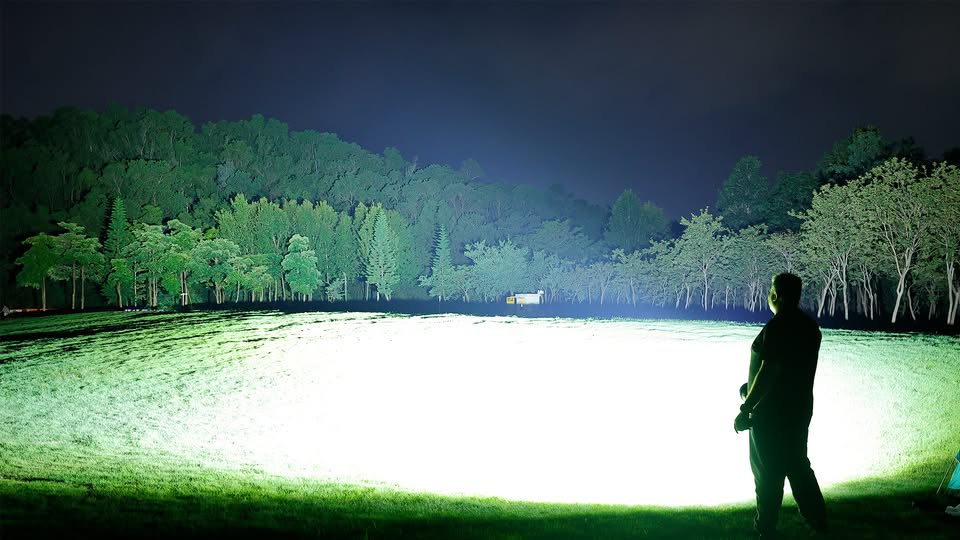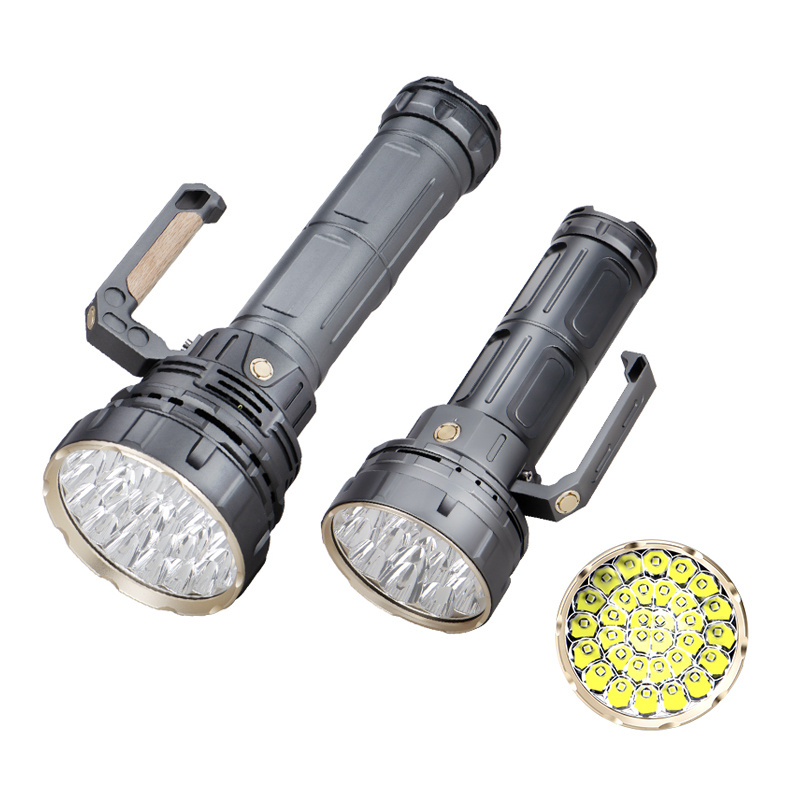How Importers Can Match Lumen Output with Regional Market Preferences

Matching flashlight brightness to local preferences helps importers meet diverse consumer needs. Regional factors such as climate, outdoor activities, and cultural habits influence demand for specific lumen outputs. Market research reveals differences in preferred brightness levels. For example, some regions favor basic models under 100 lumens, while others require powerful units above 1000 lumens for security. Importers who work closely with a flashlight supplier and tailor product offerings gain a distinct competitive advantage.
Lumen Output Range | Consumer Preference/Application |
|---|---|
Under 100 Lumens | Basic tasks and portability |
100 to 500 Lumens | Tactical and outdoor scenarios, balancing brightness and battery life |
500 to 1000 Lumens | Professionals requiring higher illumination |
Above 1000 Lumens | Specialized needs in security and search operations |
Key Takeaways
Understanding regional preferences for flashlight brightness is crucial for importers. Research local standards and consumer habits to tailor products effectively.
Collaboration with flashlight suppliers enhances product customization. Communicate specific lumen requirements and features to meet market demands.
Regularly gather and analyze customer feedback. Use insights to refine product offerings and adapt to changing consumer preferences.
Ensure compliance with local regulations and certifications. This practice builds trust with customers and prevents costly delays in the import process.
Stay informed about market trends and technological advancements. Continuous research helps importers maintain a competitive edge and satisfy diverse consumer needs.
Regional Lumen Preferences
Researching Local Standards
Importers rely on thorough market research to identify the average lumen output preferences in different regions. They often begin by examining local standards and regulations, which can dictate minimum or maximum brightness levels for safety and efficiency. Data analytics play a crucial role in this process. By conducting quantitative surveys among both professional and recreational users, importers gather valuable insights into preference hierarchies. These surveys focus on factors such as lumen output, material durability, power-source reliability, and price sensitivity.
Aspect | Description |
|---|---|
Survey Type | Quantitative surveys of professional and recreational users |
Focus Areas | Preference hierarchies across lumen output, material durability, power-source reliability, price sensitivity |
Methodology | Data points triangulated and subjected to validity checks; iterative workshop model for refinement |
Importers also segment the flashlight market to better understand specific needs. The market includes built-in flashlights found in smartphones and cameras, external flashlights for professional photography and recreation, and handheld flashlights used for outdoor adventures and emergency preparedness. This segmentation helps importers match product offerings to the most relevant consumer groups in each region.
Analyzing Consumer Expectations
Consumer expectations for flashlight brightness vary widely across regions. Climate and outdoor activity trends have a significant impact on these preferences. In areas with rugged terrains and severe weather, consumers demand high-lumen, durable, and weather-resistant flashlights. Outdoor activities such as camping, hiking, and hunting require reliable lighting solutions, which drives the need for higher lumen outputs.
Cultural attitudes also shape consumer choices. In some regions, people prioritize compact and portable flashlights for everyday use. In others, there is a strong preference for professional and tactical models. Sectors like law enforcement, military, and firefighting increasingly require high-performance flashlights with advanced features, including high brightness and extended battery life. This trend points to a growing demand for products with higher lumen outputs.
Tip: Importers who stay attuned to local trends and consumer feedback can quickly adapt their product lines, ensuring they meet evolving market demands.
By combining market research, data analytics, and an understanding of local conditions, importers can confidently select flashlight models that align with regional preferences. This approach not only satisfies customers but also strengthens the importer’s position in a competitive marketplace.
Product Evaluation and Selection

Comparing Lumen Specifications
Importers must assess flashlight products carefully to ensure they meet regional market needs. The evaluation process begins with verifying certifications and compliance standards. Suppliers who hold recognized certifications, such as ISO 9001 and IP68, demonstrate a commitment to quality and durability. Importers should validate performance claims by requesting independent photometric reports. These reports confirm lumen output and other key metrics. Before making bulk purchases, importers often request samples from the flashlight supplier. Field tests on these samples help determine real-world performance.
Verify certifications and compliance standards.
Validate performance claims with independent testing data.
Request samples for field testing before committing to large orders.
Technical datasheets and product reviews offer valuable insights during product evaluation. The ANSI FL1 Standard provides a comprehensive approach to testing, covering lumen output, beam distance, and other performance metrics. Artificial intelligence in product reviews uses natural language processing to analyze user feedback for sentiment and key features. Computer vision technology can assess video reviews, offering visual evidence of actual light output and beam patterns.
Evidence Type | Description |
|---|---|
ANSI FL1 Standard | Comprehensive testing for lumen output, beam distance, and performance |
AI in Product Reviews | Analyzes user feedback for sentiment and key features |
Computer Vision | Assesses video reviews for light output and beam patterns |
Adjusting Product Choices
Selecting the right flashlight models requires balancing cost, quality, and lumen output. Buyers prioritize solutions that combine innovation with compliance. Procurement cycles rely on product performance metrics and vendor certifications. Key criteria include scalability, adherence to standards, innovation, and long-term return on investment. Importers must avoid common risks, such as overlooking regulatory compliance or focusing solely on price.
Innovation and compliance drive purchasing decisions.
Data-driven procurement cycles depend on performance metrics and certifications.
Scalability, standards compliance, and ROI are essential criteria.
Ignoring regulations or relying only on price can lead to costly mistakes.
A flashlight supplier who understands these priorities can help importers select products that align with regional demand. By working closely with the supplier, importers ensure their offerings meet both market expectations and regulatory requirements.
Tip: Regularly review product performance and market feedback to refine selection strategies and maintain a competitive edge.
Working with Flashlight Suppliers
Customizing Lumen Output
Importers collaborate with a flashlight supplier to tailor flashlight brightness for specific markets. They communicate regional requirements, such as preferred lumen ranges and additional features like adjustable brightness. A flashlight supplier often provides customization options, including different LED modules, lens types, and battery capacities. Importers request prototypes and conduct field tests to confirm that the product meets local expectations. In the Middle East, customers value flashlights that combine functionality with style. Adjustable brightness settings increase satisfaction and help importers address diverse consumer needs. By working closely with a flashlight supplier, importers ensure that each model aligns with the demands of the target market.
Tip: Importers should maintain clear communication with their flashlight supplier throughout the development process. This approach helps avoid misunderstandings and ensures that the final product matches market preferences.
Sourcing for Regional Needs
Importers use strategic sourcing practices to find flashlights that meet regional market requirements. They focus on building relationships with a reliable flashlight supplier who understands local regulations and consumer trends. Successful sourcing involves several key steps:
Understanding and adhering to import regulations.
Ensuring proper documentation, including commercial invoices and packing lists.
Leveraging local expertise, such as partnering with customs brokers or trade consultants.
A flashlight supplier who offers transparent documentation and compliance support simplifies the import process. Importers also verify that sourced products match local consumer preferences for brightness and design. They analyze market feedback and adjust orders based on changing trends. By leveraging local expertise, importers navigate complex regulations and avoid costly delays. This proactive approach strengthens their position in competitive markets and builds trust with customers.
Compliance and Customer Feedback
Meeting Regulations
Importers face strict requirements when bringing lighting products into new markets. Each region enforces unique standards to protect consumers and ensure product quality. Importers must understand these rules and work with certified suppliers. They check for safety certifications and energy efficiency labels before shipping products. National testing laboratories often verify compliance, and many countries demand local testing.
Key certifications and standards include:
UL, CE, CCC, PSE, SAA, and INMETRO for safety in different regions.
ENERGY STAR, EU Energy Label, and China Energy Label for energy efficiency.
EMC standards, such as FCC in the U.S. and EN 55015 in the EU, to prevent electronic interference.
Local testing requirements from national laboratories.
Importers who follow these guidelines avoid legal issues and build trust with customers. They also gain access to more markets and reduce the risk of product recalls.
Tip: Importers should maintain updated records of certifications and regularly review changes in local regulations.
Monitoring Market Response
Customer feedback helps importers improve flashlight offerings and match market preferences. They use several methods to collect and analyze opinions about brightness and performance. Importers centralize feedback from multiple sources and monitor online mentions. They track reviews and use custom data channels to gather specific insights. Automated reports and alerts provide timely updates on trends. Importers also scrape large volumes of feedback for deeper analysis. Aspect-based sentiment analysis reveals how customers feel about brightness features. Topic detection highlights common themes in feedback. Open-ended surveys and direct interactions through chat or call centers offer qualitative insights.
Method | Purpose |
|---|---|
Collect and centralize feedback | To gather comprehensive insights from various sources. |
Track Mentions | To monitor customer discussions about flashlight brightness across platforms. |
Track Reviews | To analyze customer opinions and ratings on flashlight brightness. |
Custom Data Sources | To incorporate specific feedback channels relevant to the product. |
Automated Reports & Alerts | To receive timely updates on customer feedback trends. |
Scrape Customer Feedback | To gather large volumes of feedback for analysis. |
Aspect-based Sentiment | To understand customer feelings about specific features of flashlight brightness. |
Topic & Theme Detection | To identify common themes in customer feedback regarding brightness. |
Open-ended Survey Analysis | To analyze qualitative feedback from surveys for deeper insights. |
Chat and Call Center Analysis | To extract sentiment and concerns from direct customer interactions. |
Importers who monitor market response adapt quickly to changing preferences. They refine product lines and maintain a strong reputation in competitive markets.
Importers achieve success by researching regional preferences, evaluating products, and collaborating with suppliers. Ongoing market research identifies consumer trends and technological advancements, allowing companies to adapt products and remain competitive. Streamlight and SureFire demonstrate how innovation and responsiveness drive market relevance. Importers who prioritize compliance and customer satisfaction avoid costly delays and build strong reputations.
Factor | Impact on Importer Success |
|---|---|
Regulatory Compliance | Prevents delays and financial losses |
Customer Satisfaction | Ensures repeat business and positive recommendations |
Importers should focus on compliance and customer needs to secure long-term growth.
FAQ
What is lumen output, and why does it matter for importers?
Lumen output measures flashlight brightness. Importers use lumen ratings to match products with local consumer needs. Higher lumens suit outdoor or professional use. Lower lumens fit everyday tasks. Correct lumen selection increases customer satisfaction.
How can importers identify regional preferences for flashlight brightness?
Importers analyze market research, survey local users, and review competitor products. They also consult with distributors and retailers. This approach helps them understand which lumen ranges are most popular in each region.
What certifications should importers check before sourcing flashlights?
Importers verify certifications such as UL, CE, CCC, and SAA. These standards confirm product safety and compliance. Energy efficiency labels like ENERGY STAR also matter. Certified products meet local regulations and build consumer trust.
How do importers gather customer feedback on flashlight brightness?
Importers collect feedback through online reviews, direct surveys, and social media monitoring. They use sentiment analysis tools to identify common themes. This process helps them adjust product offerings to meet changing market demands.
Can flashlight suppliers customize lumen output for specific markets?
Yes. Suppliers offer customization options, including adjustable brightness, different LED modules, and battery capacities. Importers request prototypes and conduct field tests to ensure products meet local expectations.
See Also
A Complete Guide to Understanding Flashlight Lumens
Understanding 1000 Lumens: A Guide to Brightness
Maximizing Brightness Control with Stepless Dimming Lanterns
